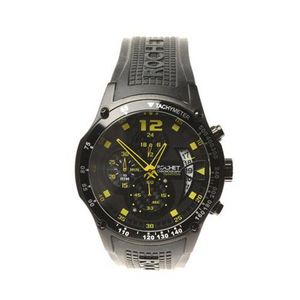Edwardian Sheraton Revival Writing Desk
You must be a subscriber, and be logged in to view price and dealer details.
Subscribe Now to view actual auction price for this item
When you subscribe, you have the option of setting the currency in which to display prices to $Au, $US, $NZ or Stg.
- Tambour - A form of folding shutter formed by narrow widths of wood with the flat side glued to canvas, and used on some writing desks, sideboards and other cabinets.
The tambours may run vertically and enclose some stationery compartments, such as in a lady's writing desk. Or the tambours may run horizontally, such as in a Cutler desk, and form an enclosure for the whole of the writing surface. - Thomas Sheraton - Thomas Sheraton (1751-1806) was born in Stockton on Tees in the north of England. He was apprenticed to a local cabinetmaker and after working as a cabinetmaker, Sheraton moved to London about 1790. Although he described himself as a cabinet-maker, like Chippendale, no definite piece of furniture can be traced to him as maker. Nevertheless, he was immensely influential and in 1791-4 published his four volume book 'The Cabinet-Maker and Upholsterer's Drawing Book'. The books were used as source of design by the furniture-making trade , who often simplified or modified the designs to suit their own preferences. Sheraton furniture is marked by restraint and sophistication, elegance and discretion, though he also found time to invent fanciful combination furniture.
- Edwardian - The Edwardian period of English furniture and decorative arts design is named for Edward VII (1841 ? 1910) who was King of the United Kingdom and the British Dominions and Emperor of India for the brief period from 1901 until his death in 1910. It follows the Victorian period, in turn was followed by the Art Nouveau and Art Deco styles. In Australia, designs of this period are also known as being in the Federation style.
This item has been included into following indexes:
-
desks, period or age
- Edwardian 79
- Sheraton style 26
-
desks, style or type
- cylinder top 48
- tambour top 35
Visually similar items

A large German porcelain drawing room group, early 20th century, with maker's mark of Ackerman & Fritze, the lace porcelain group comprising musicians and dancers in 18th century attire, in pastel colours and raised upon a rococo base. Provenance: acquired

A Rochet Sport Ignition Carbon chronograph wristwatch, black dial with 3 registers, yellow markers and hands, centre seconds, tachymeter bezel, stainless steel, quartz movement, neoprene band, new, working.

Late 19th century Russian icon, of rectangular form, painted with an image of Christ holding a staff, 22.5 cm x 18 cm

An early Victorian mahogany chest of drawers, mid 19th century, with a simple extended top above two cockbeaded drawers with pressed oval plates with floral embellishments and 'D' swing handles, three conforming full width drawers below, a shaped apron and
